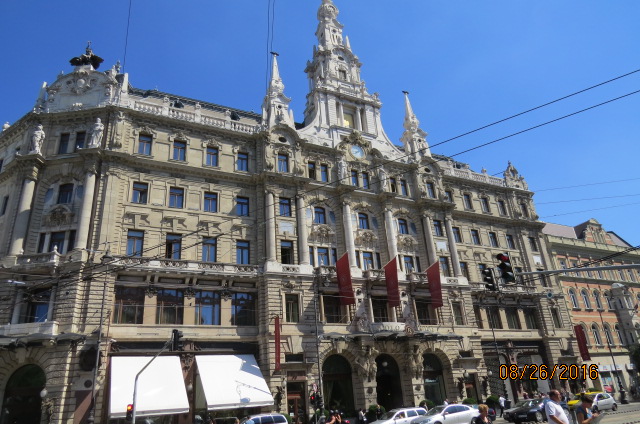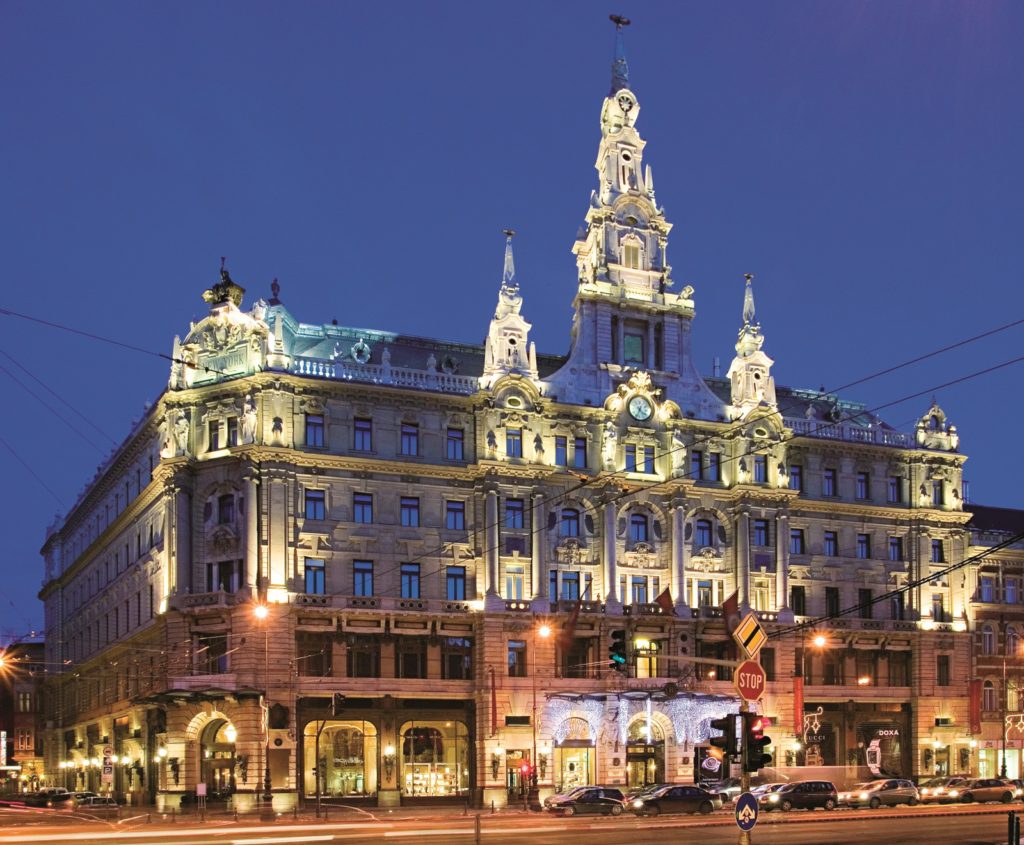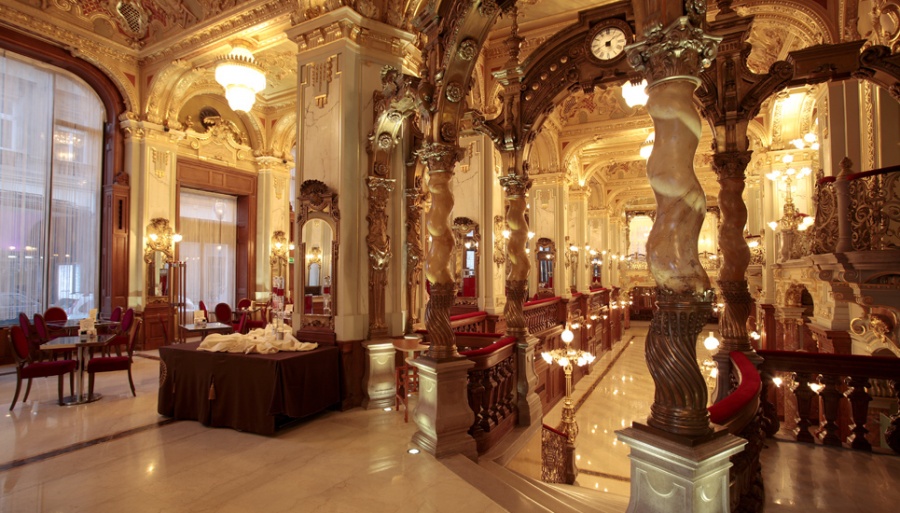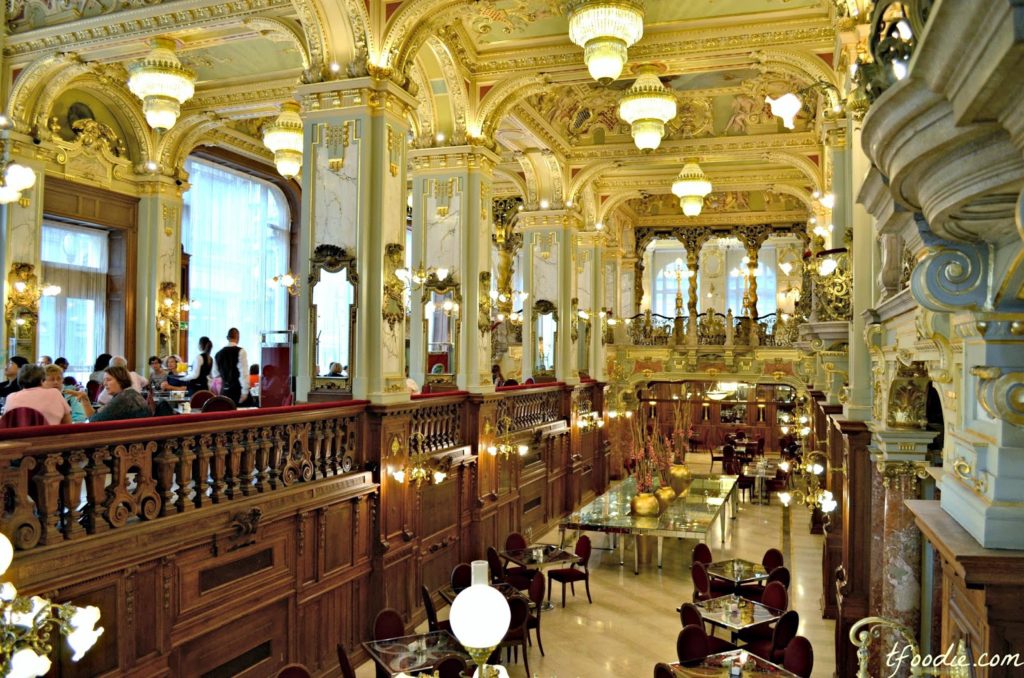The Number 2 Tram.
The National Geographic Society’s book, Journeys of a Lifetime has a feature in which it lists the world’s “Top 10 Trolley Rides.” The top four, one in Canada and three in the U S are in North America but coming in at number seven and the first of the four European trams on the list is Budapest’s #2 tram. Here’s their brief description:.
Trams are still very much part of everyday life in Budapest, which has a total of 155 kilometers of tram routes. On the Pest side of the city, the #2 tram follows the curve of the Danube River. This is the best way to see the Parliament building up close and the panorama of Buda Castle across the river. Sit on the side nearest the river for the best views.
If you’re so inclined, you can board this video and spend 22 minutes or so riding the full length of the line from Jászai Mari tĂ©r to the southern terminus at KözvágĂłhĂd. (Of course, it’s a tram so you can hop off at any stop you’d like.) Shot from the driver’s perspective, it doesn’t provide the most spectacular riverside views but I can point out some familiar sights (or at least familiar if you’ve read the entirety of this journal). You’ll probably see them best if you watch this in full screen.
The first stop comes at about 1:20 and you’ll see one side of Parliament. In a few minutes it rounds into Kossuth Square. You’ll see the back of the Kossuth monument, the Parliament on the right, and the Ethnographic Museum on the left. As the tram moves south along the square, you should spot the monument to RákĂłczi. Then, as it rounds the corner and reaches the second stop, the statue of Gyula Andrássy is straight ahead with the tall bell tower of Matthias’ Church on the hills of Buda in the distance.
Round the next corner and, at about the 4:30 mark, look very closely to the right and you’ll see the Shoes Along the Danube. There are five or six people at the memorial. In the distance, you can also see Buda Castle. At 5:15, the Chain Bridge comes into view and, when the train stops at 5:53 on the video, the spot where Pat and I exhaled, jumped off the tram and began our lives as public transit fugitives.
After the fourth stop as the train proceeds along the Promenade, you can see the Elizabeth Bridge and beyond it, Gellert Hill and the Liberty Statue. These become a little clearer at 8:49 and the stop at VigadĂł tĂ©r. Sadly, you can’t see the theater in this view. However, you do get a nice view of the Liberty Bridge just past 11 minutes into the ride. That underground stop for the Central Market is as far south as we ever rode.
Next stop New York Life.
It was closing in on the time we’d set to meet Alison for lunch at a place I’d read about before the trip – the New York CafĂ© – and Alison seemed excited by the choice. Had Patricia and I been more familiar with Budapest, we could have walked directly from Jászai Mari tĂ©r to the Boscolo Hotel where the cafĂ© is located. You see, although it changes names several times along the way, the street named Szent István körĂşt at the Margaret Bridge is part of the Grand Boulevard that encircles the center of Budapest and ErzsĂ©bet körĂşt, where the cafĂ© is located, is simply its continuation. As I look at the map now, had we walked directly, we would have walked just a little farther than we did in actuality but we wouldn’t be tram fugitives (and I think our status as the latter adds a bit of fun in the retelling).
The building that houses the cafĂ© was built in the late 19th century to be the local headquarters of the New York Life Insurance Company. The cafĂ© occupied the ground floor and opened on 23 October 1894 under the name New York KávĂ©ház. Almost immediately it became a place where the literati of Budapest gathered to spy the famous poets, playwrights, journalists, and authors who lived in or were simply visiting the city and who were known to frequent the cafĂ©. There’s a legend that on the night the cafĂ© opened, Ferenc Molnár threw the keys of the entrance door into the Danube so it would remain symbolically always open. Some papers at the time called it the most beautiful cafĂ© in the world.
(Molnár, born Ferenc Neumann, emigrated to the U S in the middle of the 20th century to escape the persecution of Jews. Although several of his plays were adapted into films, he may be most familiar to American audiences today for his play Liliom which served as the basis for the musical Carousel. In Hungary, he’s probably best known for his novel about rival youth gangs in Budapest, The Paul Street Boys. In fact, the Paul Street Boys sculpture,
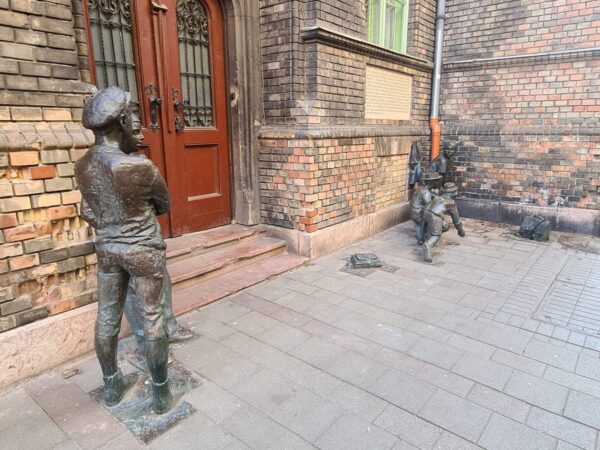
located a bit southwest of the Central Market, is one of the best known in the city.) [Photo by katielou106 from Atlas Obscura)]
Of course, the building was acquired by the government during the communist era and the café eventually fell into a state of disrepair. At some time after the transition away from communism, a luxury Italian hotel chain called Boscolo purchased it and restored the New York Café to its original florid and flamboyant glory.
If you want to feel like a guest at a grand formal Belle Époque party surrounded by all the era’s trappings of wealth and opulence, grandeur, and splendor then Budapest’s New York KávĂ©ház is one place you should visit. I’ll let the photos speak for themselves.
I’ll start with two of the exterior – one in daylight
and one in evening.
In the first of the interior pictures below, there’s a small table at the right side of the large window. I think we sat there or very close to that spot.
And two more because it needs to be overdone.
The slickly produced and interesting menu fits the dĂ©cor. You can see it in .pdf by using the link that reads “New York CafĂ© menu download” here.
As Patricia and I regaled Alison with tales of our adventures since arriving in Budapest (including me bemoaning my lost camera) and she told us of her reunions with her family there, I nibbled on the New York Caesar salad which comes with grilled chicken. In this instance, I think using New York as an adjective referred more to the café than to the city or state.
We had a lovely time but, even after our final goodbyes with Alison, our trip hadn’t reached its ultimate conclusion. So, if you’d like to read about our final hours in Budapest, I’ll once again suggest you stay tuned.
